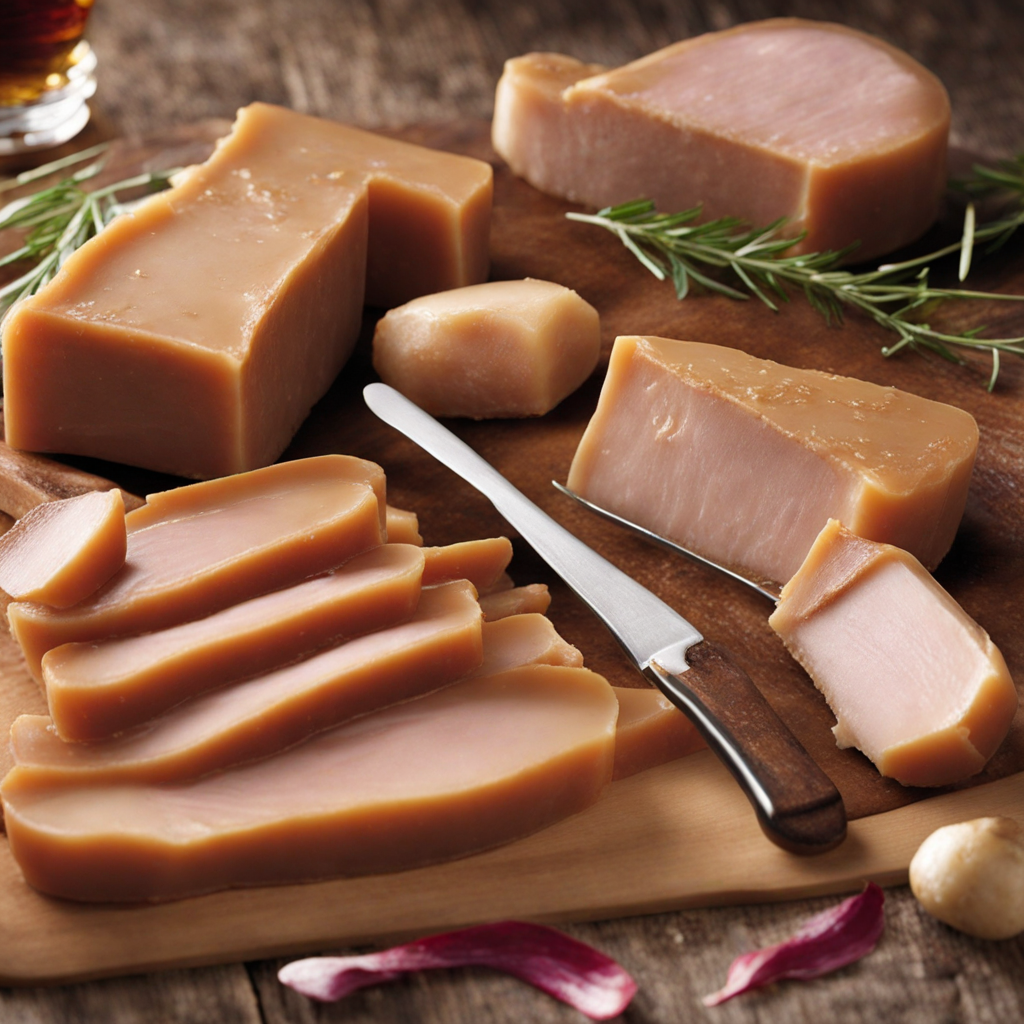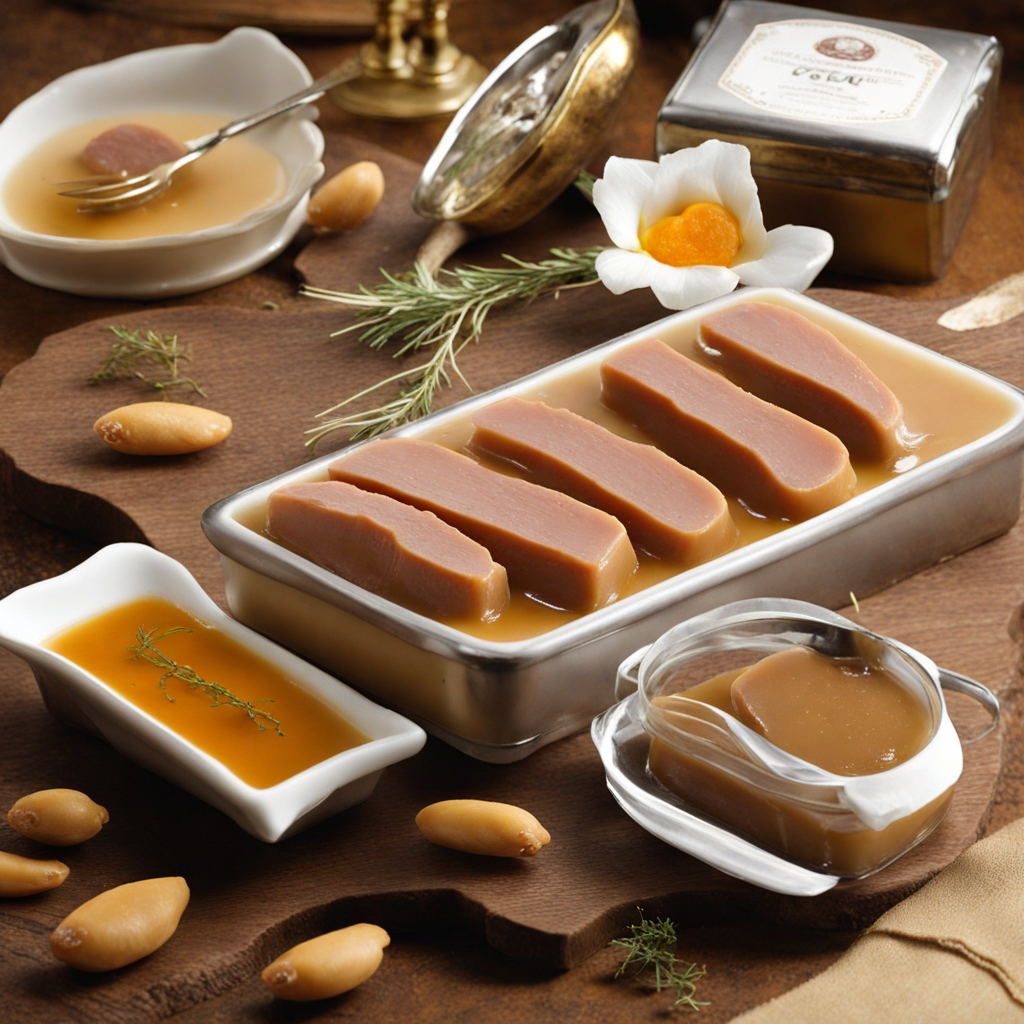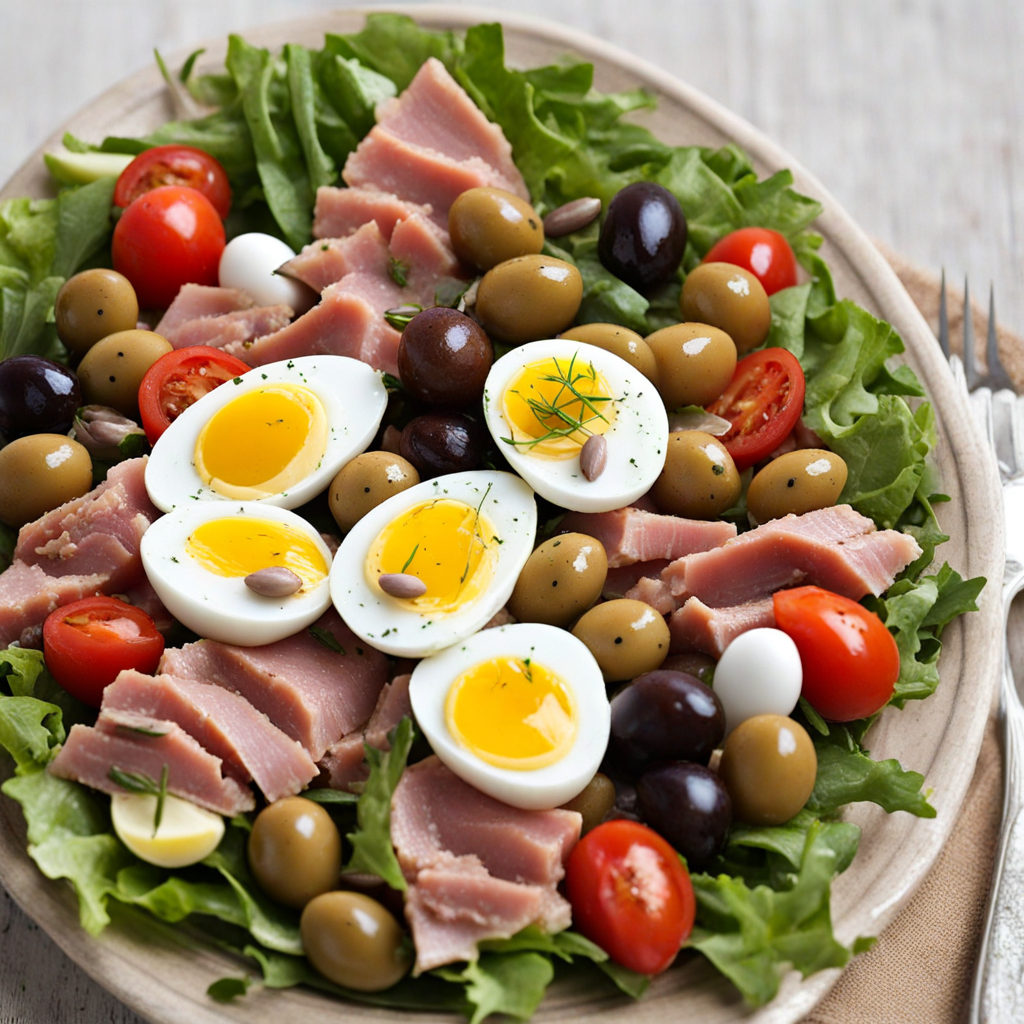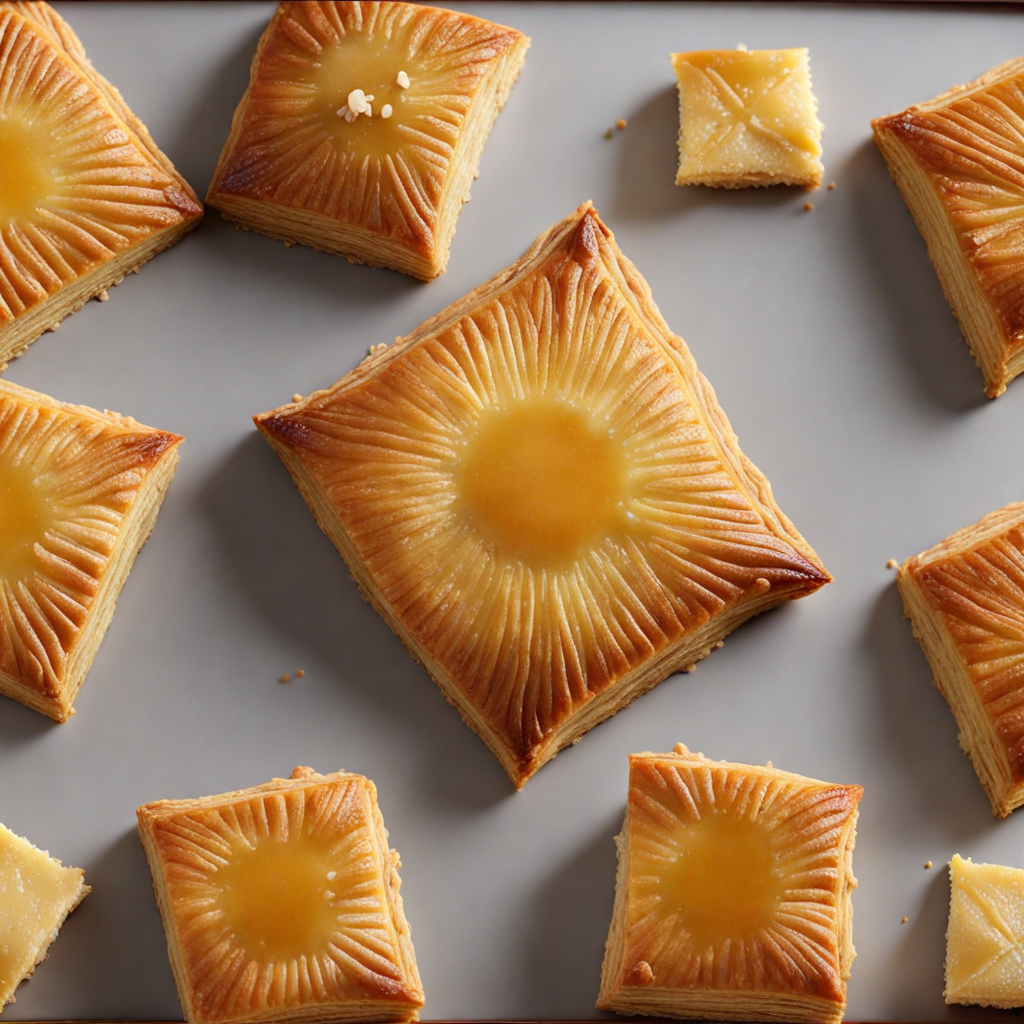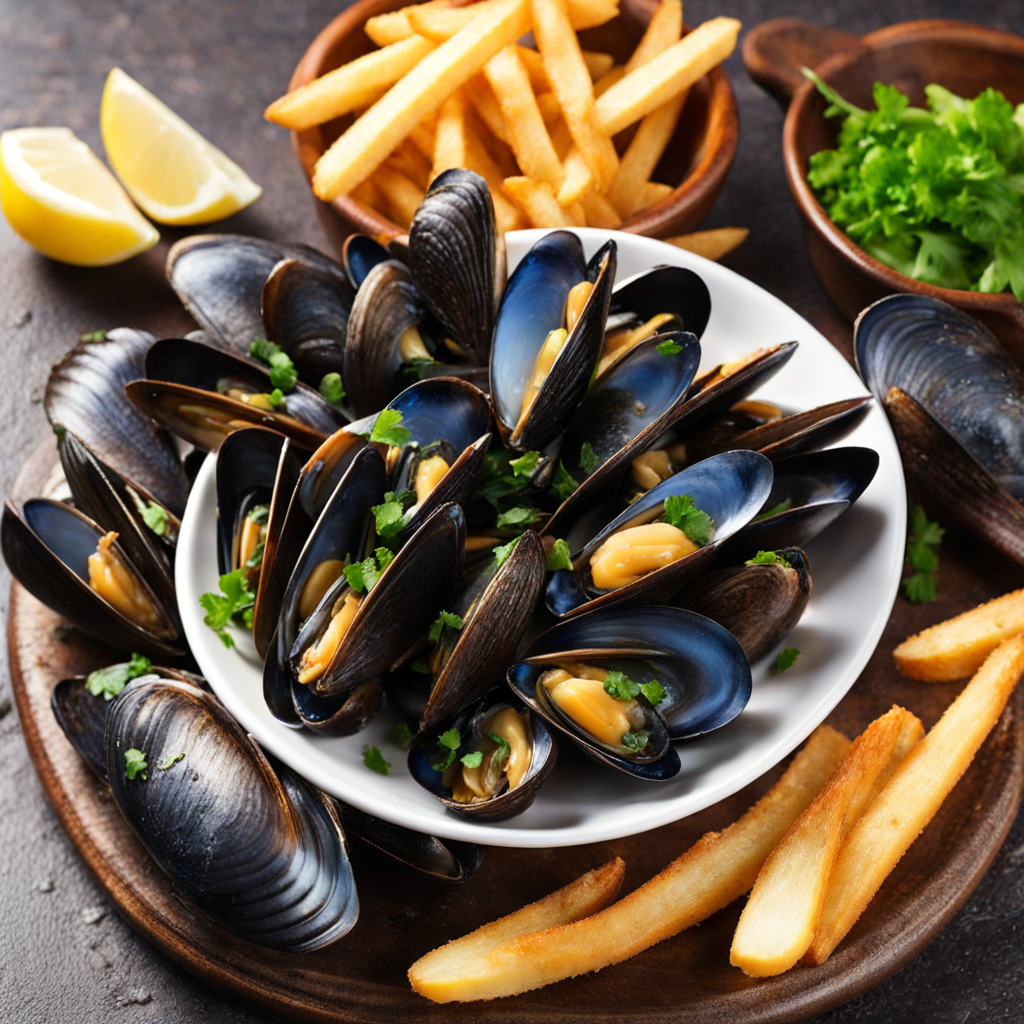Foie Gras
Foie Gras is a luxurious delicacy from France, renowned for its rich, buttery flavor and unique texture. This dish is made from the liver of a duck or goose that has been specially fattened through a process called "gavage." The resulting foie gras is incredibly smooth, almost like a velvety spread, and it melts in the mouth, offering a depth of flavor that is both savory and slightly sweet. Its complex taste profile features earthy notes, with hints of nuts and a subtle richness that can be both indulgent and satisfying, making it a standout on any gourmet platter. Traditionally, foie gras is served in various forms, including as a pâté, terrine, or as a seared slice. When prepared as a pâté, it is often paired with crusty bread, fruit compotes, or pickles, which enhance its flavors while providing a delightful contrast in textures. When seared, the outer layer develops a crisp, golden-brown crust, while the inside remains luxuriously soft, creating a delectable combination. Chefs often elevate the dish with accompaniments like balsamic reductions, truffle oil, or seasonal fruits, adding layers of complexity to the tasting experience. Foie Gras is not just a dish; it embodies a tradition of French gastronomy that celebrates the artistry of cooking. Its preparation is meticulous, reflecting the care and skill that goes into creating this esteemed delicacy. As you savor foie gras, you are not only indulging in a remarkable flavor but also participating in a culinary tradition that has been cherished for centuries. Whether enjoyed as a starter, a main course, or a luxurious addition to a charcuterie board, foie gras invites food lovers to experience the elegance and depth of French cuisine.
How It Became This Dish
The Rich History of Foie Gras: An Exquisite Delicacy from France Foie gras, translating to "fat liver" in French, is a luxurious delicacy that has captivated palates and ignited debates for centuries. Renowned for its rich flavor and buttery texture, this dish has a storied past woven into the fabric of French culinary tradition and culture. Its journey from ancient times to modern gourmet restaurants reveals not just a food item, but an emblem of gastronomic artistry and ethical contention. #### Ancient Roots The origins of foie gras can be traced back to ancient Egypt, where the practice of fattening geese for their liver is believed to have begun. Archaeological findings suggest that Egyptians cultivated geese and employed a process of force-feeding to enlarge their livers, a technique that would later take root in other cultures. This practice was not merely for indulgence; it was tied to religious rituals and offerings, showcasing an early recognition of the liver's gastronomic potential. The Greeks and Romans followed suit, with the Romans particularly enamored with the rich taste of fattened liver. They referred to it as "iecur," and it was often served at banquets, celebrated for its luxuriousness. However, it was in France that the art of producing foie gras would reach unparalleled heights, evolving into a culinary staple that would define French haute cuisine. #### The French Connection The French tradition of foie gras can be traced back to the Middle Ages, particularly in the region of Alsace and the south of France, where the practice of goose and duck farming flourished. By the 17th century, the production of foie gras was well established, with specific techniques for preparing the liver emerging. The Gascony region, with its rich culinary heritage, became particularly known for its production of foie gras, a reputation that continues to this day. In the 18th century, foie gras gained immense popularity among the French aristocracy. It was served at lavish feasts and became a symbol of opulence and refinement. The dish was often paired with sweet wines, creating a harmonious balance that delighted the senses. The notable chef Jean Anthelme Brillat-Savarin, author of "The Physiology of Taste," praised foie gras in his writings, cementing its status in French gastronomy. #### Culinary Techniques and Varieties The production of foie gras primarily involves two types of birds: ducks and geese. The traditional method of making foie gras involves a process called "gavage," or force-feeding, which contributes to the liver's enlargement and distinct flavor. While controversial, this technique has been a hallmark of foie gras production for centuries, drawing on methods that were refined over time. There are several varieties of foie gras, with the most notable being "foie gras de canard" (duck liver) and "foie gras d'oie" (goose liver). The former is more commonly produced and offers a slightly stronger flavor than the latter, which is considered the pinnacle of foie gras for its delicate and nuanced taste. Preparations of foie gras can vary widely, from terrines and pâtés to pan-seared and served with fruit compotes or sauces, showcasing the versatility of this ingredient. #### Cultural Significance Foie gras holds a unique place in French culture, often associated with celebrations, holidays, and special occasions. It is a staple on festive tables during Christmas and New Year, symbolizing abundance and luxury. The dish has also found its way into the hearts of food enthusiasts around the world, becoming a quintessential representation of French culinary excellence. In addition to its gastronomic significance, foie gras has also been the center of ethical debates. Animal welfare advocates argue against the practice of force-feeding, claiming it inflicts unnecessary suffering on the birds. This has led to legal restrictions and bans on foie gras production in certain regions, including California, where the ethical implications have sparked heated discussions. These controversies have prompted chefs and producers to explore alternative methods of foie gras production that prioritize animal welfare, leading to innovations in farming practices. #### Evolution and Modern Times In recent years, the appreciation for foie gras has evolved. While still celebrated in fine dining, it has faced challenges from changing consumer values, particularly as younger generations become more conscientious about food sourcing and ethical practices. Chefs are increasingly tasked with finding a balance between traditional methods and modern sensibilities, leading to creative reinterpretations of the dish. Some chefs have embraced a more sustainable approach, such as raising ducks and geese in free-range environments where they can forage naturally, thereby allowing them to develop richer flavors without the use of force-feeding. This shift not only addresses ethical concerns but also appeals to a growing demographic of diners who prioritize sustainable and humane food sources. Despite the controversies, foie gras remains a cherished element of French culture and cuisine. It has also transcended national boundaries, inspiring chefs around the globe to incorporate its rich, complex flavors into their culinary creations. In this way, foie gras serves as a bridge between tradition and innovation, embodying the essence of French gastronomy while adapting to contemporary tastes. #### Conclusion Foie gras is more than just a dish; it is a testament to the artistry, history, and culture of French cuisine. From its ancient origins in Egypt to its esteemed place in modern culinary practices, foie gras continues to evoke admiration and debate. As society navigates the complexities of food ethics and sustainability, the future of foie gras will likely reflect a blend of tradition and innovation, ensuring that this exquisite delicacy remains a significant part of the gastronomic landscape for years to come. Whether enjoyed as an indulgent treat or a symbol of culinary heritage, foie gras encapsulates the rich tapestry of flavors, traditions, and ethical considerations that define our relationship with food.
You may like
Discover local flavors from France


